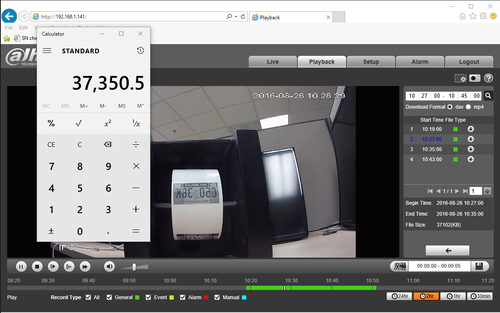News/H.264 Plus vs. H.264
Contents
H.264+ Smart Codec vs H.264
Observation
- Dahua's new H.264+ Smart Codec saves bandwidth compared to H.264
- Special equipment is required to take advantage of H.264+ Smart Codec
Hypothesis
H.264+ Smart Codec will be more efficient than H.264. I expect a reduction of 20-50% in bandwidth over H.264.
Experiment
Setup
- Storage: Video files were stored on the Micro-SD card of the camera, and these are averages of several 8 minute recordings. This experiment was conducted by recording under these video conditions:
- Network: The use of Solar Winds Real-Time bandwidth monitor was used to track network traffic of the camera over SNMPv2 protocol to monitor data passed through the devices Ethernet port. Two devices were viewing the main from the device and the total was averaged.
- Still Scene: a scene where there were no moving objects or lighting changes.
- Moving Scene: a spinning wheel used for LPR was run that occupied approximately 1/15.5 of the screen.
| H.264 Plus: | H.264: | Saved Storage: | |
| Still Scene: | 16158 Kbps | 40822 Kbps | 60.42% |
| Moving Scene: | 37351 Kbps | 47338 Kbps | 21.10% |
| H.264 Plus: | H.264: | Saved Bandwidth: | |
| Still Scene: | 180 Kbps | 300 Kbps | 40.00% |
| Moving Scene: | 790 Kbps | 950 Kbps | 16.84% |
Theory
Theory: Utilizing a cognitive encoding method, Smart Codec uses several technologies in order to reduce the amount of space and bit rate a video feed consume. By taking reference frames and applying them to refreshed frames the Smart Codec eliminates the need to transmit data for an unchanged image, or parts of the image where there is no movement. This supports the results of the experiment showing lower bit rates and also lower storage rates.

